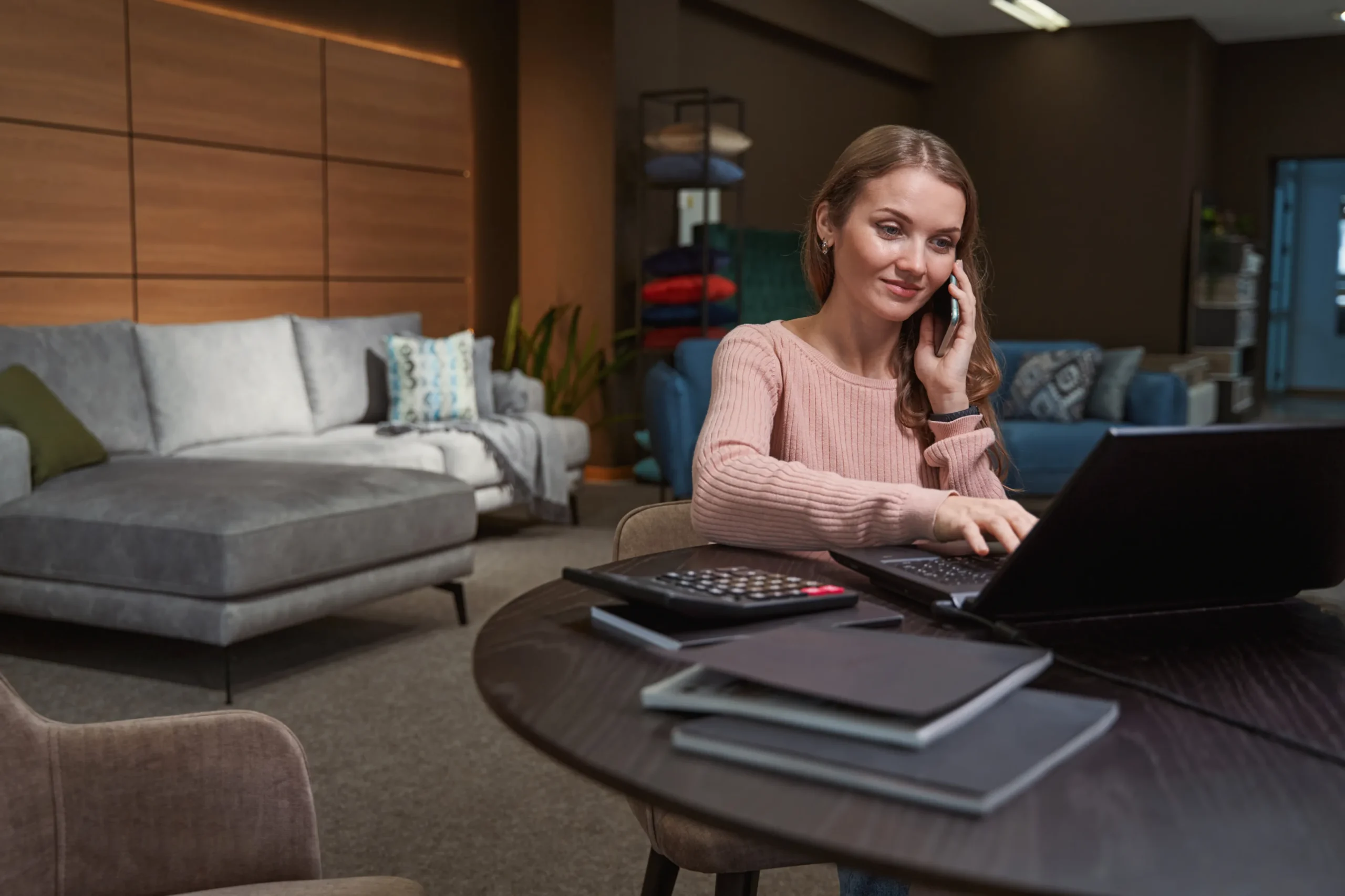
Learn how to customize your interior design proposals for different client types, showcasing your skills and delivering tailored concepts. As an interior designer, you understand the importance of creating compelling interior design proposals that communicate your vision and expertise effectively. However, presenting a generic proposal to every client might not yield the desired results.
Each client type, whether residential, commercial, or hospitality, has specific requirements, ambitions, and expectations that need to be addressed in a personalized manner by an interior designer. By customizing your interior design proposals, you can showcase your ability to understand and cater to the unique preferences of different clients. This sets you apart from your competitors and increases your chances of winning projects.
A well-tailored proposal demonstrates your professionalism, attention to detail, and commitment to delivering exceptional results. This blog post will explore various strategies for customizing your interior design proposals. We will delve into the significance of researching client preferences, adapting the proposal structure, customizing interior design concepts, addressing budget and timeline concerns, and communicating effectively.
By the end, you will have a comprehensive understanding of how to create personalized proposals that resonate with your clients and ultimately lead to successful projects. So, let's dive in and discover how you can take your interior design skills to the next level by mastering the art of customizing your design proposals for different client types.

To customize your interior design proposals effectively, it's crucial to understand the different client types you may encounter in your design journey. By recognizing their unique characteristics and expectations, you can tailor your proposals to meet their expectations. Let's explore the most common client types in the interior design industry and gain insights into their preferences.
Residential clients are homeowners seeking to transform their living spaces into their dream homes. They value personalization, comfort, and functionality. To cater to their needs, your interior design proposal should emphasize creating spaces that reflect their lifestyle and taste.
Incorporate elements that evoke warmth, individuality and a sense of personal connection. Showcase your expertise in maximizing space utilization, optimizing storage solutions, and integrating smart home technologies.
Commercial clients typically include businesses, offices, or retail spaces. They prioritize functionality, efficiency, and brand representation. Your interior design proposal should focus on creating spaces that enhance productivity, employee satisfaction, and customer experience.
Consider their industry, company culture, and branding guidelines while presenting your interior design concepts. Showcase your ability to create flexible workspaces, optimize natural lighting, and incorporate ergonomic furniture.
Hospitality clients encompass hotels, resorts, restaurants, and entertainment venues. Their primary goal is to provide memorable experiences for their guests. Your interior design proposal should demonstrate your expertise in creating visually stunning and functional spaces that align with your brand image.
Consider factors like ambiance, comfort, and durability. Showcase your ability to design inviting lobbies, captivating guest rooms, and unique dining areas. Understanding the differences between these client types will enable you to tailor your interior design proposals to their specific requirements. Take the time to research and familiarize yourself with the expectations, preferences, and industry standards associated with each client type.
This knowledge will help you develop proposals that resonate with their vision and increase your chances of securing yourself more interior design projects. Keep in mind that while these client types have distinct characteristics, there may be overlaps and variations within each category.
Flexibility and adaptability are crucial while you navigate the diverse landscape of interior design clients. By honing your interior design skills in customizing your proposals, you can showcase your expertise, build strong client relationships, and elevate your interior design career to new heights.

To create personalized and impactful interior design proposals, researching thoroughly on your clients' preferences is essential. By understanding their tastes, lifestyles, and aspirations, you can tailor your proposals to align with their vision and increase the chances of winning their trust. Check out these effective methods of researching client preferences and gathering the insights needed to customize proposals:
One of the most effective ways to understand your clients' preferences is through direct communication. Schedule client interviews to engage in meaningful conversations and gain insights into their interior design expectations.
Ask open-ended questions that encourage them to express their likes, dislikes, and aspirations. Pay attention to their responses, tone, and body language to gauge their preferences accurately. By actively listening and taking notes, you can identify key elements to incorporate into your interior design proposal.
Mood boards are powerful tools for capturing clients' aesthetic preferences and generating a visual representation of their desired atmosphere for their spaces. Use online platforms like Twinn HQ or traditional methods like physical boards to curate a collection of images, colors, textures, and materials that align with your client’s style.
Present the mood board during client meetings to spark discussions and ensure a shared understanding of the desired design direction. Encourage clients to provide feedback and refine the mood board accordingly.
In today's digital age, social media platforms offer a wealth of information about clients' interior design style preferences. Research their social media profiles, particularly platforms like Instagram and Pinterest, to identify recurring themes, color palettes, and design styles they gravitate towards.
Pay attention to their saved posts, comments, and following list to gain valuable insights. This research will help you align your interior design proposal with their online preferences and create a cohesive vision.
Designing a comprehensive client questionnaire is an efficient way to gather essential information and preferences. Create a list of well-crafted questions that cover various aspects, such as preferred color schemes, design styles, functionality requirements, and budget expectations.
Make sure to ask about any specific dislikes or must-haves as well. Tailor the questionnaire to each client type, ensuring it addresses their unique needs. Analyze the responses carefully to identify common threads and incorporate them into your interior design proposal.
Visiting the physical space that requires design intervention provides invaluable insights. Observe the existing layout, architectural elements, and natural lighting conditions. Take measurements, photographs, and notes to understand the space's limitations and possibilities.
Additionally, pay attention to the client’s interaction with the space and their existing furniture and decor choices. This information will help you propose interior design concepts that maximize the potential of the space while incorporating elements that resonate with the clients' preferences. By employing these research methods, you can gather valuable information about your clients' tastes, enabling you to craft interior design proposals that resonate with their vision.
Remember, research is an ongoing process, and it's crucial to adapt your understanding as you gather more insights throughout the design process. Your dedication to understanding your clients' preferences will set you apart as an interior designer who truly listens to and delivers exceptional results.

When presenting your interior design proposals, the structure and format play a vital role in effectively communicating your ideas to clients. By tailoring the proposal structure to each client type, you can showcase your professionalism, attention to detail, and ability to meet their specific needs. Let's explore how you can customize the structure of your interior design proposals for maximum impact.
Regardless of the client type, your interior design proposal should include key components that provide a comprehensive overview of the project. These components typically include:
Clearly define the scope of work, outlining the specific areas and aspects of the space that will be addressed. Present your interior design concept in a visually appealing manner, including mood boards, sketches, or 3D renderings to help clients visualize the proposed design direction.
Outline the project timeline, highlighting key milestones and deliverables to set realistic expectations. Provide a detailed breakdown of the estimated costs, including materials, labor, and any additional expenses. Be transparent and ensure clients understand the investment required in the whole interior design project.
Highlight your qualifications, relevant experience, and the expertise of your team members, instilling confidence in your interior design skills to deliver results.
Residential clients often seek a more personalized touch in their interior design proposals. Consider incorporating the following elements to cater to their needs:
Conduct a thorough lifestyle analysis to understand how your design can enhance their daily routines and activities. Address specific requirements such as child-friendly spaces, pet-friendly materials, or aging-in-place considerations. Provide sample floor plans that illustrate various furniture layouts and space utilization options. This allows residential clients to visualize the potential arrangement of their living areas.
When creating proposals for commercial clients, focus on showcasing how your interior design concepts align with their business goals and brand identity. Consider the following adjustments:
Emphasize how your interior design enhances workflow efficiency, promotes collaboration, and optimizes space utilization. Highlight specific features like ergonomic workstations, breakout areas, or customer interaction zones.
Incorporate elements that reflect the client's brand identity, such as color schemes, logos, or corporate values. Showcasing a cohesive visual representation of their brand within the proposal will resonate with commercial clients.
Hospitality clients prioritize creating memorable guest experiences. Tailor your interior design proposal structure to address their unique requirements:
Map out the guest journey within the proposed space, showcasing how each area contributes to an exceptional guest experience. Highlight areas such as the lobby, reception, guest rooms, dining spaces, and leisure facilities.
Illustrate how your interior design concepts create the desired ambiance and atmosphere, catering to the target clientele. Incorporate elements such as lighting schemes, material selections, and decor choices that align with the desired guest experience.
By customizing the structure of your interior design proposals, you demonstrate your ability to adapt and meet the specific needs of each client type. Consider including visuals, clear language, and concise yet informative sections that engage your clients and showcase your unique interior design approach. By tailoring your proposal structure, you increase the chances of winning clients' trust and securing projects that align with their vision.

Customizing design concepts is a crucial aspect of tailoring your interior design proposals to different client types. By understanding the specific needs, preferences, and target audience of each client, you can create interior design concepts that resonate with their vision and objectives. Let's explore how you can effectively customize your design concepts for maximum impact.
Design aesthetics vary greatly depending on the client type. Residential clients may prefer cozy and inviting spaces, while commercial clients may lean towards sleek and modern designs. Hospitality clients often seek unique and memorable atmospheres. Consider the following when customizing your interior design proposals:
Select color palettes that align with the desired mood and ambiance, considering the client's preferences and the intention of the space.
Choose materials and finishes that complement the client's style and preferences, whether it's natural wood for a warm residential feel or sleek metals for a contemporary commercial look. Incorporate textures that evoke the desired atmosphere, such as plush fabrics for comfort or sleek surfaces for a polished appearance in an interior design for any space.
Each client type has specific functional requirements that must be addressed in your interior design concepts. Consider how the space will be used and adapt your design accordingly:
Focus on creating functional layouts that optimize space and accommodate the needs of the residents. Pay attention to storage solutions, furniture placement, and practical features that enhance daily living.
Emphasize functionality and efficiency in your interior design concepts. Consider the specific activities and workflow of the business, incorporating features like ergonomic workstations, designated meeting areas, and sufficient storage for supplies.
Design concepts for hospitality spaces should prioritize guest experiences and comfort. Consider factors such as traffic flow, seating arrangements, and amenities that enhance the overall stay or visit.
For commercial and hospitality clients, integrating their brand identity into your interior design concepts is essential. Consider the following elements to customize your concepts effectively:
Incorporate the client's brand colors into the design, either subtly through accents or prominently in focal points. Incorporating the logo creatively can also reinforce brand identity through interior design.
Infuse the interior design concept with elements that align with the client's brand values and messaging. This could be through artwork, signage, or environmental graphics that communicate the desired brand image.
When customizing interior design concepts, consider the cultural and demographic factors that may influence your clients' preferences. Take into account the region, target audience, and cultural nuances to create design concepts that resonate with the intended users.
By customizing your design concepts to suit the specific needs of each client type, you showcase you’re interior design skills to understand their vision and create spaces that align with their objectives. Incorporating the right design aesthetics, addressing functional requirements, integrating branding elements, and considering cultural factors will result in interior design proposals that capture the essence of the client's vision.
Remember to present your design concepts in a visually compelling manner, utilizing mood boards, renderings, or sketches to effectively communicate your ideas. By customizing your design concepts, you enhance your chances of securing projects and building long-lasting client relationships based on trust and understanding.

Addressing the budget and timeline aspects of your interior design proposals is crucial to ensure transparency and manage client expectations. By carefully considering these factors and presenting them clearly in your proposals, you demonstrate your professionalism and ability to deliver projects within the specified constraints. Learn how you can effectively address the budget and timeline in your proposals.
Understanding and addressing your clients' budget requirements is essential for a successful interior design proposal. Consider the following strategies to address the budget effectively:
Provide a comprehensive breakdown of the estimated costs involved in the project. This should include materials, furnishings, labor, and any additional expenses such as permits or specialized contractors.
Present various options to accommodate different budget ranges. Offer alternatives for materials, finishes, or furnishings that align with the client's desired aesthetic but may vary in price.
Suggest cost-saving measures without compromising the overall interior design vision. This could involve sourcing materials from alternative suppliers, reusing or repurposing existing elements, or suggesting more cost-effective alternatives that still meet the desired interior design objectives.
Setting realistic timelines is essential to manage client expectations and ensure smooth interior design project execution. Consider the following strategies to address the timeline effectively:
If the project is extensive or complex, consider breaking it down into phases with specific milestones and timelines for each phase. This allows for better project management and ensures progress is communicated clearly to the client.
Account for lead times when presenting the project timeline. This includes factors such as material procurement, custom-made items, or specialized installations that may require additional time to coordinate.
Build in contingency time to account for unforeseen circumstances or delays that may arise during the execution of any interior design project. This helps mitigate potential issues and ensures a realistic timeline is presented to the client.
Clear communication, transparent cost breakdowns, realistic timelines, and collaborative discussions help build trust and foster a positive working relationship with your clients. Remember to be flexible and adaptable throughout the process, as unforeseen changes may occur. By addressing these key factors, you set the foundation for a successful interior design project.

By employing clear and concise communication methods, you can convey your ideas, address client concerns, and foster a positive working relationship. Here are some key strategies for effective communication for interior designers:
Active listening is the foundation of effective communication. When engaging with clients, give them your undivided attention and show genuine interest in their ideas and concerns. Take notes, ask clarifying questions, and summarize their points to ensure a shared understanding. By actively listening, you demonstrate your commitment to meeting their needs and create a solid foundation for a successful interior design project.
As an interior designer, you have a unique advantage in communicating through visuals. Utilize tools such as mood boards, sketches, 3D renderings, or virtual reality presentations to convey your interior design concepts effectively. Visual representations can bridge the gap between your ideas and the client's imagination, fostering a clearer understanding and alignment.
When communicating with clients, use clear and concise language to ensure your message is easily understood. Avoid technical jargon that may confuse or overwhelm clients. Instead, explain concepts and processes in a way that is accessible and relatable to them.
Strive for simplicity while conveying essential information about the interior design project, budget, timeline, and any challenges or changes that may arise.
Keeping clients informed about the progress of the project is crucial for maintaining transparency and trust. Provide regular updates and progress reports, highlighting milestones achieved, challenges overcome, and any adjustments made to the design or timeline.
Actively listen to the client's concerns, address them promptly, and offer alternative solutions or compromises when necessary. Effective conflict resolution strengthens the client-designer relationship and helps maintain a positive working environment.
In conclusion, mastering the art of customization of interior design proposals for different client types is imperative to showcase your interior design skills and secure successful projects. By understanding each client's preferences, budget, and timeline requirements, you can tailor your design concepts, structure, and communication approach to meet their specific needs.
Always focus on leveraging your interior design skills, utilize visual communication, and foster effective and transparent communication throughout the process. By doing so, you establish trust, build strong client relationships, and ensure the delivery of exceptional interior design concepts that exceed expectations.
FAQs
Effective communication of design concepts can be achieved through visual aids like mood boards, sketches, and 3D renderings. Clear and concise language, avoiding jargon, and actively listening to clients' feedback are also key in ensuring effective communication throughout the interior design process.
An effective interior design proposal should include components such as project scope, design concept, timeline, budget breakdown, and team expertise. These elements provide a comprehensive overview of the project and instill confidence in your capabilities.
Customizing interior design proposals is crucial as it demonstrates your understanding of each client's unique needs and helps build trust. It showcases your ability to deliver tailored concepts that align with their vision and objectives.